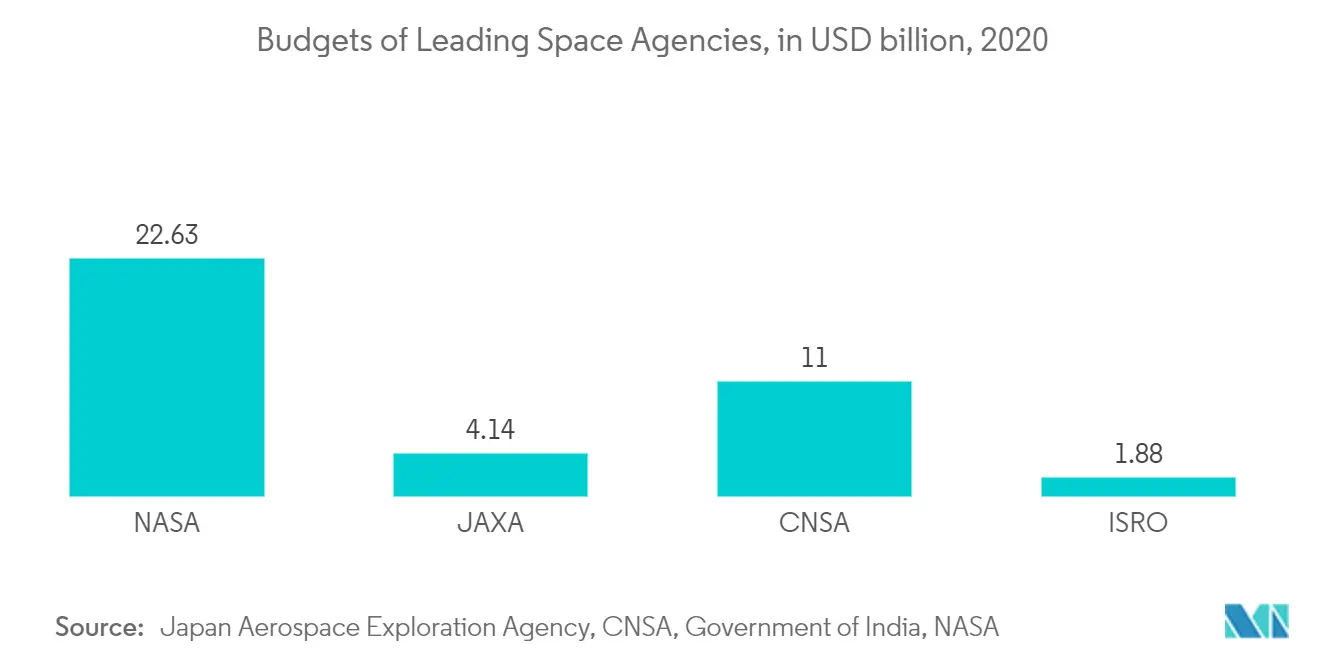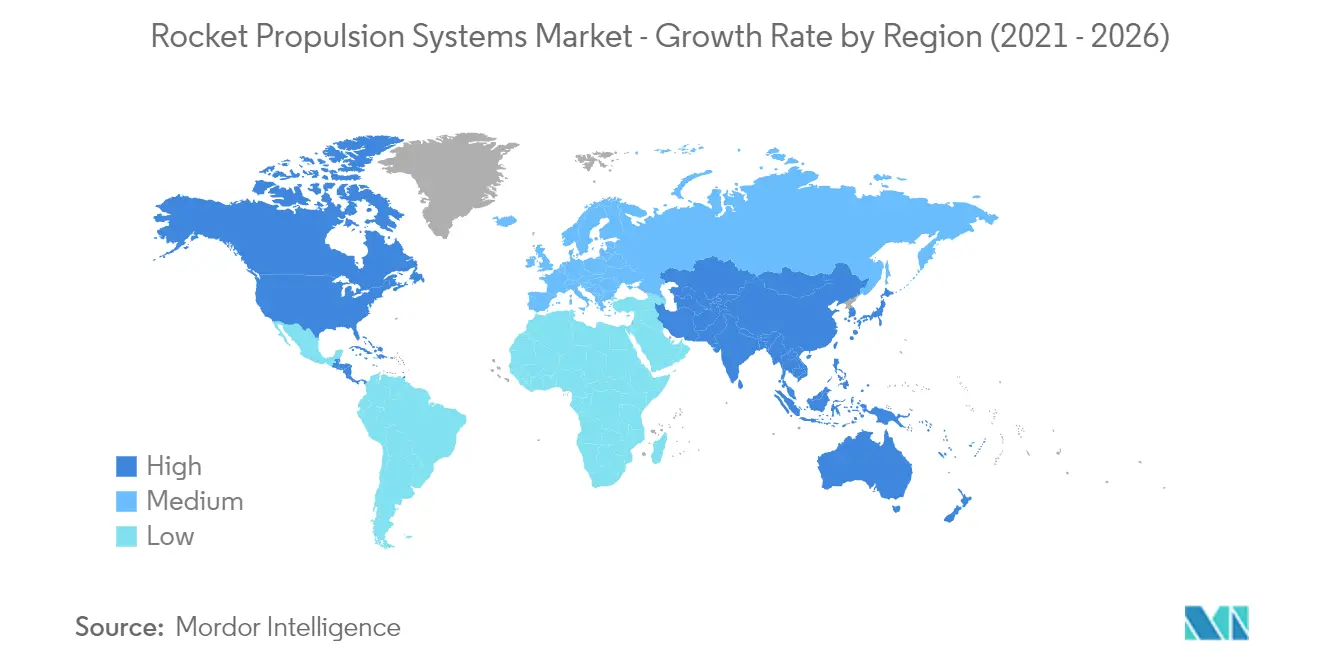Market Trends of Rocket Propulsion Systems Industry
This section covers the major market trends shaping the Rocket Propulsion Systems Market according to our research experts:
Enhanced Expenditure on Space Exploration Activities
The major economies of the world are spending a significant share of their GDP on space exploration activities and launching new satellites. The competition among space agencies is significantly high, which has been evident for several decades. Even in the current scenario, several nations are investing heavily in space launch activities to achieve milestones in space explorations and in R&D, which may help them become pioneers in new space technologies. While NASA's space budget for 2019 stood at more than USD 22.63 billion for space exploration activities, China allocated a budget of more than USD 11 billion for CNSA in 2019. During the forecast period, the same trend is expected to continue, and countries are projected to spend heavily on space exploration activities. This is particularly due to several ambitious space programs that are lined up in the next few years. NASA's plan to launch a rover to Mars, ISRO's plan to send a manned spacecraft to space, and similar projects from many other space agencies are expected to attract huge investments into the space launch industry, thereby driving the rocket propulsion systems market.

Asia-Pacific to Witness the Highest Growth During the Forecast Period
Countries in the Asia-Pacific region, such as China and India, are investing heavily in space exploration activities, and they are expected to continue the same during the forecast period. The Indian Space agency is currently focused on developing the indigenous space launch industry. For instance, in 2018, the Government of India approved USD 1.31 billion for building 40 PSLV and GSLV rockets over the next 5-year span to launch communication satellites and increase broadband connectivity for rural areas. This may strengthen the space infrastructure and reduce the dependence on procured launches from foreign countries. In addition, there are many projects from the region that are lined up during the forecast period. For instance, from India, there are projects like Chandrayaan-3 in 2021 and the Gaganyaan in 2021, in which the agency is planning to send astronauts to space. The Japanese agency, JAXA, is also planning to send its rover to the lunar surface in 2021. The country is supporting the organic growth of private companies by helping them invest in and penetrate the rocket propulsion systems market in the country. In 2019, a Japanese aerospace start-up, Interstellar Technologies, successfully launched the country's first privately developed rocket, the Momo-3 unmanned rocket. The governments' support for such private companies may help the ongoing efforts to achieve stable launches and the mass production of rockets in quick cycles in the upcoming period.


